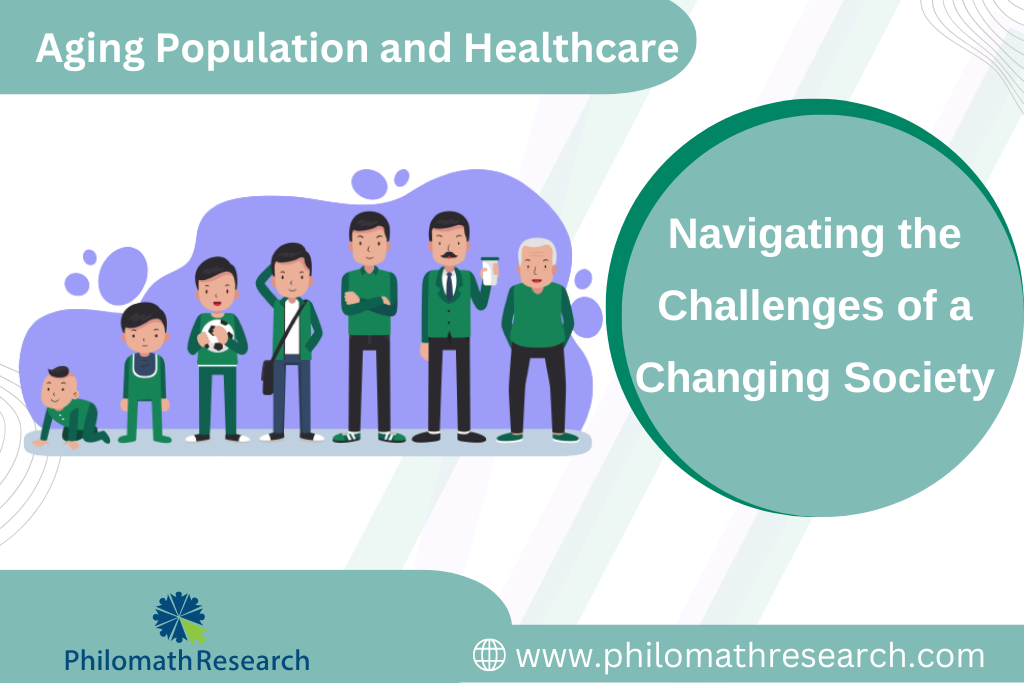
Aging Population and Healthcare: Navigating the Challenges of a Changing Society
At Philomath Research, we explore the profound implications of the aging population on healthcare systems worldwide. In this blog post, we delve into the complexities and opportunities that arise as a growing number of individuals enter their senior years. Join us as we examine the evolving landscape of healthcare and discover strategies to effectively address the unique needs of older adults.
I. The Dynamics of an Aging Population Definition and Drivers of the aging population:
Gain insights into the factors contributing to this demographic shift, including declining birth rates and increased life expectancy. Explore how these elements shape the aging population and its impact on healthcare systems. Delve into current demographic trends and projections, emphasizing the importance of proactive measures to accommodate the changing needs of older adults.
II. Healthcare Challenges in an Aging Society Prevalence of chronic diseases:
Uncover the age-related health conditions that become more prevalent among older adults, placing a burden on healthcare resources. Explore the complexities of managing multiple comorbidities in the elderly population. Workforce shortages: Analyze the impact of an aging healthcare workforce and the challenges associated with recruiting and retaining professionals to meet the growing demand. Highlight the need for specialized geriatric care providers to cater to the unique needs of older adults. Financial implications: Examine the escalating healthcare costs associated with an aging population and the strain this puts on healthcare budgets. Discuss potential solutions and policy approaches to address these financial challenges, including long-term care funding and insurance reforms.
III. Promoting Healthy Aging Preventive healthcare measures:
Emphasize the importance of early detection, screenings, and preventive interventions for age-related health conditions. Explore the significance of vaccinations and immunizations to safeguard older adults against preventable diseases. Highlight the role of promoting healthy lifestyles and wellness programs in enhancing overall well-being and quality of life. Enhancing geriatric care: Advocate for person-centered care approaches that prioritize the individual needs, preferences, and goals of older adults. Explore the use of interdisciplinary healthcare teams and technology-enabled solutions to improve access and quality of care for older adults. Social support and community engagement: Address the issue of social isolation and loneliness among the elderly population and its impact on health and well-being. Discuss the importance of creating age-friendly communities that foster active aging and social integration. Highlight the need for supportive programs for caregivers and families.
IV. Policy and System-level Strategies Healthcare policy reforms:
Advocate for tailored healthcare policies that address the specific needs and challenges of an aging population. Discuss long-term care financing and insurance reforms to ensure affordable and accessible care for older adults. Collaborative healthcare models: Explore the benefits of integrated care systems and care coordination to improve the continuity and quality of care for older adults. Highlight the importance of intersectoral collaboration with community organizations, housing agencies, and transportation services. Research and innovation: Advocate for advancements in geriatric medicine and technology to improve diagnostics, treatment options, and quality of life. Highlight the need for increased research efforts focused on age-related diseases and conditions.
Conclusion
At Philomath Research, we recognize the profound impact of the aging population on healthcare systems. By understanding the challenges and opportunities presented by this demographic shift, promoting healthy aging practices, and implementing policy and system-level strategies, we can ensure that healthcare systems are equipped to provide high-quality, person-centered care. Through collaboration, innovation, and comprehensive approaches, we can enhance the well-being and quality of life of individuals as they age. Join us on this journey of navigating the challenges and embracing the opportunities of a changing society.